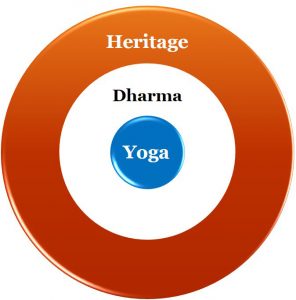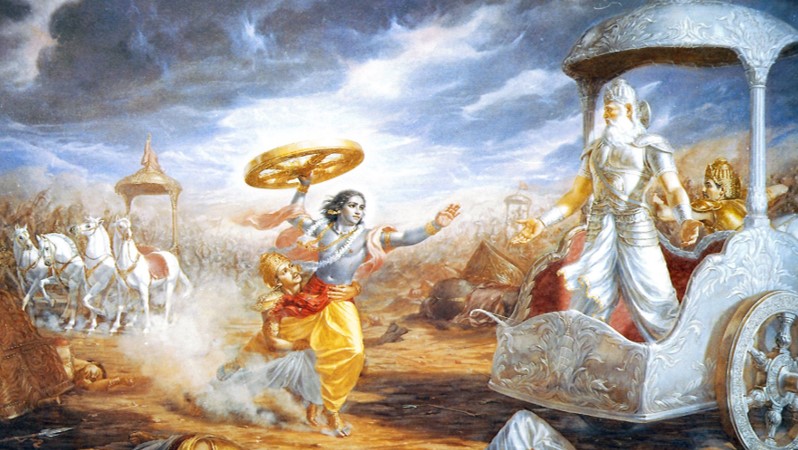Today (June 21, 2018) we celebrate International Yoga Day (IYD), the fourth since its launch in year 2015 with great fanfare across the globe. It touches me personally, as I have anchored my whole life in the philosophy of yoga. Today the world is extremely stressed: from individuals, families, societies, and countries to even mother nature. Yoga is an excellent solution (in my view – the best) to address the big challenges that humanity faces in current times. Yoga provides a robust philosophical foundation for the harmonious existence of humanity, where diversity gets celebrated among cultures, along with a sustainable co-existence with nature.
The acknowledgement from the United Nations was a good step in popularising and emphasizing the importance of yoga. But what it significantly establishes is that it is Indian heritage and India as the ‘home/owner’ of yoga and that it should be credited for birthing and nurturing it through the ages. Yoga is a prime example of what India has and continues to offer to the world. However while we celebrate this day, rejoice in its recognition, there are risks to watch out for. In the current times of west dominated globalization, it is important to be vigilant about the fact that India is fast losing control over the discourse of yoga. If not managed well, yoga may be downgraded as ‘secularized’ (a far inferior concept compared to sāpeksha dharma) and become ‘just science’, get arrogated to the westernized notional scheme and lose its linkage with its vital traditions of dharma. If that happens, yoga will lose a significant part of its essence and that will be a sad consequence for the whole of humanity. There are forces on both sides, some for Indian heritage and yoga and others against it, and the stage is set for the ‘Battle of Yoga’ in the Mahābhārata of civilizations.
Yoga has its roots in Indian heritage. The mainstay of our identity, or Indianness, is our heritage. While Abrahamic religions (specifically Christianity and Islam) have become quite prominent in recent history, the mainstream heritage of India is founded in Sanātana Dharma. Indians typically do not know that the paradigms of thought are very different in Sanātana versus the Abrahamic philosophy. While the differences between Abrahamic and Sanātana Dharma thought are numerous, at deep personal level, the idea of ‘self-realization’ is perhaps the fundamental one. Abrahamic philosophy stops at the idea of ‘belief’ and keeps the individual away from “God” forever. In Abrahamic philososphy, the idea of becoming one with God, like ‘Aham Brahmāsmi’ of Sanātana Dharma, is completely absent. According to Sanātana Dharma, every individual is inherently part of ‘Ēshwara’ and the task for an individual is to ‘realize’ it (not just believe it), through a journey of self-evolution. Yoga is one of Sanātana Dharma’s most prominent modes of self-realization, and as such integral to Sanātana philosophy. Its philosophy conflicts starkly with the Abrahamic conceptual framework.
Rajiv Malhotra’s work ‘Being Different’ contains a percipient representation of what constitutes the foundations of Indian heritage. Another excellent account of the origins and development of Yoga and its inextricable intertwining with various philosophical traditions originated in India, is the documentary ‘History of Yoga’ by Vishuddhi Films. It also brings out epigraphical evidences and provides a chronological perspective of yoga and its moorings in Indian heritage, which confutes the timeline assigned by major western scholars. A trailer of the film may be viewed here.

[Pic: YogadharmaHeritage]
Caption: Yoga as the Core of Hinduism/Sanātana Dharma, and Bhāratīya Heritage
Viewpoint – Good first step and Shankhnād for Mahābhārata of Civilizations:
Depending on one stands, there are multiple ways to look at any topic – today it is IYD. In my view, IYD is a good first step in popularising yoga in our generation’s critical struggle in the service of our heritage. It is a sad fact that most Indians are not properly anchored in their own heritage. Reasons for this are many, from impact of British colonization to simply the unavailability of knowledge by means of formal/State approved education curriculum and knowledge distribution channels outside the state’s direct influence. Our minds have been so contaminated about the fundamentals on our own heritage, that it is almost impossible to get a common ‘story of India’ from any two Indians. Moreover, there has been and is even now, a significant intervention of anti-India forces to keep us divided, by heavy investments in the intellectual vehicles that influence the Indian mind. Anyone who would put on an analyst’s thinking cap would quickly realize that the Mahābhārata of civilizations has been a continuous phenomenon in history and will continue in the future. With high population and significant resources, and being a soft target, India today is the most important battleground of our lifetimes. It always makes me humble and solemn when I think about this battle at home, and we as the owners and carriers of Dhārmic heritage are not even aware of it (not most of us). The sad fact is that IYD saw the greatest resistance, not anywhere else in the world, but at home – inside India!
The Danger of Distortion, Digestion and Control over Discourse:
The linkage of yoga with Sanātana Dharma and pride of our heritage is severely under threat. It is consistently attacked by anti-India forces in overt as well as subtle ways. But what is still more dangerous; are the termites of well-meaning but ignorant intellectuals who stand under the banner of India/dharma loyalty that weaken us. In US, yoga is close to a $30 billion industry and only a negligible number of Indians (with loyalty to heritage) play any significant role in it. Most people in power positions are loyal to Abrahamic religions. It is not difficult to infer that, yoga in their hands is bound to be distorted, taken apart into pieces and digested, and this precisely the reason why the common mainstream narrative of yoga is secular and ‘scientific’ and removed from dharma. For those who are unaware of the context: the concept of secularism is relevant to the idea of religion, which is essentially Abrahamic. As religions are exclusive and interfered with political establishments, the concept of ‘secularism’ evolved as a solution to the problem of conflicts created by religion, which was not a bad thing in the backdrop of the cultures it was conceived in – in Abrahamic societies. In dhārmic ethos however, such a set of premises and exclusivist beliefs that classify it as religion does not exist. We had instead a universality of the human experience and oneness of being. In India there were panthas and sampradāyas, which were/are ‘paths’ that individuals identified with according to their unique nature and calling in life. And therefore the philosophy of yoga became an integral part of the bigger Sanātana Dharma complex and promoted this outlook, facilitated individuals in any capacity, every nature of engagement. Another question that is imperative to address is, ‘WHO’ should be allowed to represent yoga in public forums. The authority of yoga should always rest with competent people who expressly declare their allegiance to Bhāratīya heritage.
Swadharma cannot be outsourced to Government, a few organizations or intellectuals:
When it comes to civilization and heritage, we are all stakeholders. In my experience, it is a trend among Indian elites to escape responsibility by externalizing it and blaming everything on the State. Government is the caretaker of any nation. In a democracy we give the elected representative the responsibility to manage the country. Commonsense says that, we would not give our house keys to irresponsible people. The practical dynamics of politics does not always bring the best people in power. This is borne out only too patently if one looks at the people in power since India’s independence in 1947 and where they have got us. Even assuming the right people are in power, a politician’s first priority is always: to get in power and stay in power. This is why vote bank politics dominates the mind in Indian society today. The topic of heritage preservation is a subtle one, and often does not get prominence in this scenario where other competing practical issues (like self-gain and corruption) and political pressures take precedence. It is subtler, it is important but often is not regarded as urgent. Given these realities, we all have a role to play in service of heritage, dharma, nation (whichever of these words best conveys our feeling, the result of the endeavours in that direction will serve the same entity, eventually). Yes, Bhāratīya/dhārmic heritage is the longest continuing alive heritage today and it has been because our ancestors nurtured it with their lives quite literally. It is our turn now!
Wake up! This Mahābhārata will be intense because the world is now connected and information travels fast. Traditions are viewed negatively in popular culture, we have technology/ screens in our hands 24×7 to keep us distracted and in a state of inertia and oblivion. Unlike the freedom struggle where the British were a clearly identifiable enemy, in this battle we will be fighting our own brothers with brown skin and common heritage – because their mindsets and loyalty have shifted to the competitors’ side.
The big question is: how long we will stay in the confused state of mind – as Arjuna, in the beginning of the Mahābhārata?
Author: Sunil Sheoran
Published: June 20, 2015
Disclaimer: The opinions expressed within this article are the personal opinions of the author. Jagrit Bharat is not responsible for the accuracy, completeness, suitability, or validity of any information in this article. All information is provided on an as-is basis. The information, facts or opinions appearing in the article do not reflect the views of Jagrit Bharat and Jagrit Bharat does not assume any responsibility or liability for the same.

